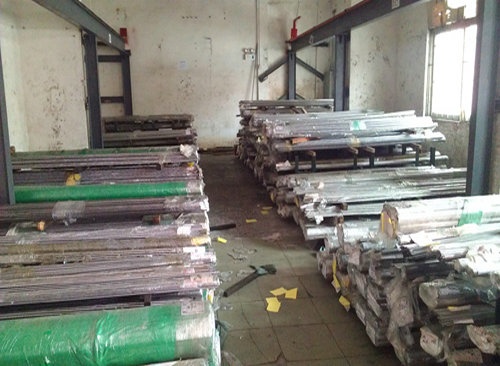
characteristic:
X5CrNi18-10 has good corrosion resistance, heat resistance, low temperature strength and mechanical properties, good hot workability such as stamping and bending, no heat treatment hardening, and no magnetism.
use:
X5CrNi18-10 is used in household products, cabinets, indoor pipelines, water heaters, boilers, bathtubs, auto parts, medical appliances, building materials, chemicals, food industry, agriculture, ship parts.
Chemical composition:
|
Grade |
C≤ |
Si≤ |
Mn≤ |
S≤ |
P≤ |
Cr |
Ni |
|
X5CrNi18-10 |
0.08 |
1.00 |
2.00 |
0.030 |
0.045 |
18.00 20.00 |
8.00 10.50 |
Mechanical properties:
Tensile strength σb (MPa): ≥520
Conditional yield strength σ0.2 (MPa): ≥206
Elongation δ5 (%): ≥40
Section shrinkage ψ (%): ≥60
Hardness: ≤187HBS; ≤90HRB; ≤200HV
Treatment process:
Heat treatment specifications: solid solution 1010 ~ 1150 ℃ rapid cooling.
Metallographic structure: the organization is characterized by austenite type.
Due to its higher nickel content and single-phase austenite structure at room temperature, it has higher corrosion resistance than Cr13 stainless steel, and has higher plasticity and toughness at low, room and high temperatures, and Good cold work forming and weldability. However, the strength at room temperature is low, the intergranular corrosion and stress corrosion tend to be large, and the machinability is poor. Austenite has no phase transformation when heated, so it cannot be strengthened by heat treatment. Heat treatment can only be performed to improve the corrosion resistance of steel:
1) Solution treatment; the purpose is to make the carbides fully dissolved and retained in austenite at normal temperature, so as to obtain a single-phase austenite structure at normal temperature, so that the steel has the highest corrosion resistance.
The heating temperature of solution treatment is generally higher, between 1050-1100C, and adjusted appropriately according to the level of carbon content. Because of the poor thermal conductivity of 18-8 stainless steel, not only it needs to be quenched and heated after preheating, but also the heat preservation time during solution treatment (quenched and heated) is long. During solution treatment, special attention should be paid to preventing carbon increase. Because carbon increase will increase the intergranular corrosion tendency of 18-8 steel. The cooling medium is usually water. The structure after solution treatment is generally single-phase austenite, but for stainless steels containing titanium, niobium, and molybdenum, especially when casting, it also contains a small amount of ferrite. The hardness after solution treatment is generally around 135HBS.
2) Stress relief annealing; in order to eliminate the residual stress after cold working, the treatment is performed at a lower temperature. Generally heated to 250-425C, 300-350C is often used. For steels that do not contain titanium or niobium, the temperature should not exceed 450C, in order to prevent the precipitation of chromium carbide and cause intergranular corrosion.
In order to eliminate the residual stress after welding and the sensitivity of steel to stress corrosion, the treatment is generally performed at a higher temperature. The heating temperature is generally not lower than 850C. Cooling method: For steel containing titanium or niobium, it can be directly cooled in air; for steel without titanium or niobium, it should be water-cooled to 500C and then cooled in air.
3) Stabilization treatment; in order to prevent the reduction of intergranular corrosion resistance caused by the reduction of TiC and NbC during the welding or solution treatment of austenitic stainless steels of titanium and niobium, this stainless steel needs to be heated to a certain temperature The temperature makes chromium carbide completely dissolved in austenite, while TiC and NbC are only partially dissolved) and then slowly cooled. During the cooling process, the carbon in the steel is fully combined with titanium and niobium to precipitate stable TiC and NbC without precipitating chromium carbides, thereby eliminating the intergranular corrosion tendency of 18-8 austenitic stainless steel. This process is called stabilization.
Delivery status:
Generally, it is delivered in a heat-treated state, and the type of heat treatment is specified in the contract; if it is not specified, it is delivered in a non-heat-treated state.
Shenzhen Zhengjie Metal Material Co., Ltd.
Contact person: Mr. Huang (13480167607)
Sales Hotline: 0755-81718772
Q Q: 2263040115 305084123
Website: www.szzj168.com
Email: 2263040115@qq.com
Address: No. 8, Songzi Park, Minzhi, Longhua New District,Shenzhen